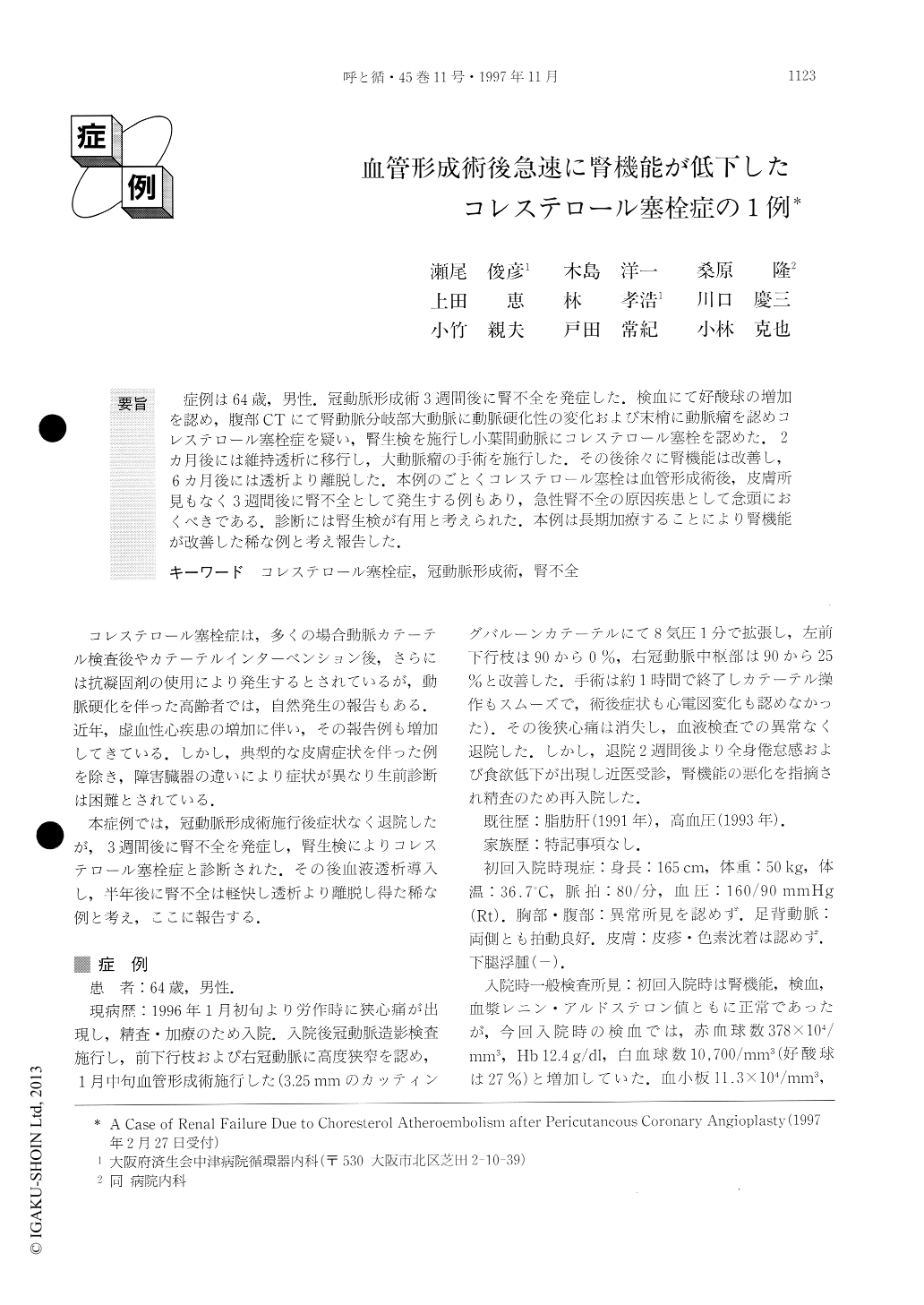Japanese
English
- 有料閲覧
- Abstract 文献概要
- 1ページ目 Look Inside
症例は64歳,男性。冠動脈形成術3週間後に腎不全を発症した.検血にて好酸球の増加を認め,腹部CTにて腎動脈分岐部大動脈に動脈硬化性の変化および末梢に動脈瘤を認めコレステロール塞栓症を疑い,腎生検を施行し小葉間動脈にコレステロール塞栓を認めた.2カ月後には維持透析に移行し,大動脈瘤の手術を施行した.その後徐々に腎機能は改善し,6カ月後には透析より離脱した.本例のごとくコレステロール塞栓は血管形成術後,皮膚所見もなく3週間後に腎不全として発生する例もあり,急性腎不全の原因疾患として念頭におくべきである.診断には腎生検が有用と考えられた.本例は長期加療することにより腎機能が改善した稀な例と考え報告した.
A 64-year-old male was admitted with renal failure which had developed 3 weeks after percutaneous trans-luminal angioplasty. Examination of peripheral bloodrevealed eosinophilia. Abdominal computerized tomo-graphy disclosed atherosclerotic changes at the site of bifacation of the renal artery and anuerysmal changes at the distal part. Suspecting cholesterol atheroem-bolism, renal biopsy was performed, revealing numerous occlusions of the artery with cholesterol emboli. Two months later the patient who was kept on maintenance hemodialysis, underwent an operation on the aneurysm in the abdonimal aorta. The renal function gradually improved on continuation of the maintenance dialysis.The patients was released from the dialysis 6 month later. Thus, cholesterol atheroembolism sometimes occurs 3 weeks after angioplasty without any symptoms and signs on the skin. and it should be kept in mind as a possible cause of acute renal failure. Histological examination including renal biopsy is a useful method for the diagnosis of cholesterol embolism. This was a rare cases in which impaired renal function was im-proved by long-term treatment to such a degree that hemodialysis was able to be discontinued.

Copyright © 1997, Igaku-Shoin Ltd. All rights reserved.


